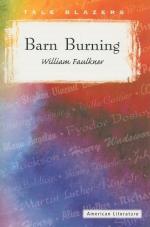|
This section contains 182 words (approx. 1 page at 400 words per page) |

|
1941: Fire damage to personal property in the United States is estimated at $286,000.
1997: Arson is the second leading cause of residential deaths in the United States, claiming 740 lives. Personal property losses from arson total nearly $28 million.
Early 1900s: Although the United States is shifting from an agrarian to an industrial society, a large portion of the country's gross national product results from agricultural production. Due to the abolishment of slavery, many landowners turn to tenant farming for their workforce. There are an estimated 250,000 sharecroppers in the United States.
1990s: Many farmers begin to sell off large parcels of their land to real estate speculators because of high land values. Most food production is left to large corporations.
1930s: William Faulkner's regionalist Southern subject matter, featuring the fictional Yoknapatawpha County, meets with criticism on two fronts: Northern critics find Faulkner's work too narrow, while Southern critics feel...
|
This section contains 182 words (approx. 1 page at 400 words per page) |

|




